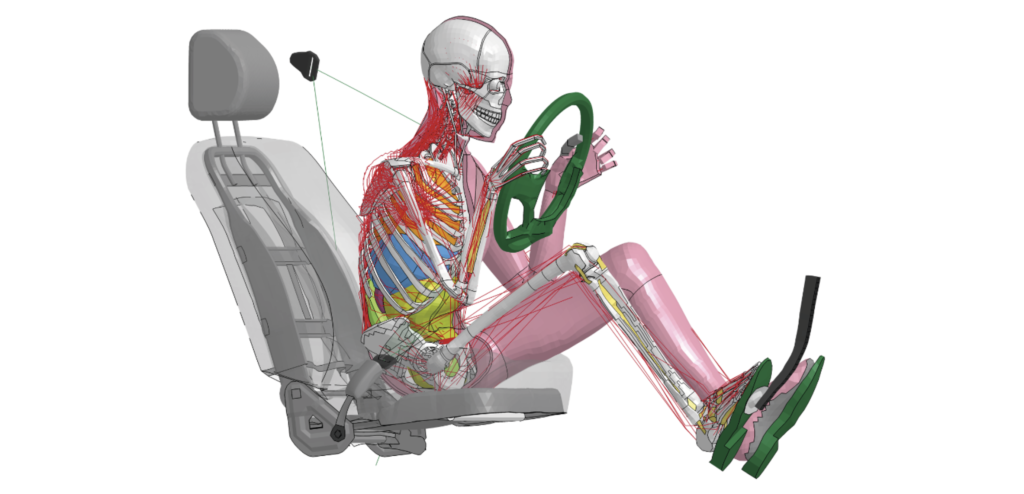By advancing its Total Human Model for Safety (THUMS) software program, Toyota aims to use computer simulation to better understand and analyze injuries sustained during vehicle crashes. The OEM’s latest development includes occupant posture change when automated driving systems are being used.
Version 7 of THUMS also features enhanced human body models, with key body parts – like the pelvis, abdominal organs, spine and ribs – benefitting from additional accuracy. The OEM’s program is now more capable of predicting the impact on human bones, organs and muscles when occupants are in a reclined position, in addition to how people change their positions or brace muscles when maneuvering a vehicle during an emergency or when safety systems are deployed.
The software update also addresses changes in occupant posture when automated driving systems are being used. If an SAE Level 3 ADAS system is being used, the driver can sit back and let the vehicle conduct maneuvers. As a result, the driver will now be in a reclined position, meaning the body will react differently with the seat and vehicle restraint systems. These changes can lead to vastly different effects and injuries when an impact occurs.
“Special attention must be paid to ensuring that the pelvis remains in the seat at the time of a crash,” explained Sabine Compigne, a technical manager in Toyota’s safety research and development operations. “This is crucial to avoid the ‘submarine effect’ where the occupant slides out from under the lap belt, risking abdominal injuries. Good pelvis retention helps to limit compression on the spine and thus prevent spinal injuries.”


